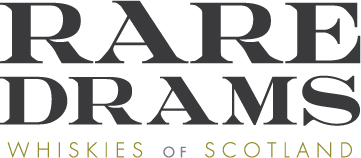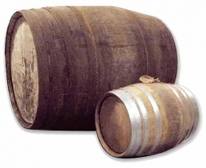Whats in a Cask ?
It wasn’t until relatively recently that Distillers understood the importance of wood in developing the final flavour profiles of the matured spirit.
It is correct that you cannot make an excellent whisky from a poor spirit, regardless of the quality of the cask….but good wood will help develop an excellent whisky from a well defined new spirit. One of the legal requirements for scotch Whisky is that the new spirit must be matured in Oak, in Scotland and for at least three years. The cask itself is limited in size and can hold a maximum of 800 litres.
The distiller of today, manages Casks , ensuring rotation, maintenance and selection are at the highest level…..their most precious asset (new Spirit), is going to be held in this wooden encasement for many years, therefore it is clearly important to get it right.
American Oak, the predominant wood in use to day, has been the container for Bourbon….where the law (currently) states that it can only be used once for this purpose, and as these are significantly less costly than their European sherry cousins, then the industry is happy to use these for new spirit .
When new spirit goes into their Bourbon, or sherry cask, this is termed first fill, providing the opportunity for the new spirit to extract maximum flavours from the wood. If a cask is used a second or further time, the ability to extract flavours and colour reduces. Of course casks can be remade, with new staves and tops added with further charring or toasting done….this adds life and impacts spirit. Therefore each new, or remade cask will impart its own, unique DNA into every charged spirit.
Many thousand casks are used in each distillery, with this unique DNA imprinted on each cask….some good, some outstanding and alas some average whiskies emerge. When brought together to provide the final Single Malt, the master blender is interested in managing all of these different ranges to create a consistent colour and taste profile for the final 10 YO Laphroiag, Macallan or Highland Park. Where Spirit Caramel is not used, it takes careful cask management to provide the final acceptable colour of the dram.
Rare Drams specialises in Single Cask whiskies.
This means that only 1 cask is used to provide the final bottle release, therefore with each release there is a new flavour (and colour) profile to discover. Even if your favourite Single Malt is a Laphroaig, Macallan or Highland Park, the single cask selection from any of these Iconic Distilleries will have the Distillery characteristics, but within each cask it will provide its new DNA individualty.
I often tell of the Single Cask 18 YO Laphroiag that was a Rare drams release….only 700 bottles worldwide, and when they were gone….they were gone. It clearly tasted of seaweed, tar, Shoppers Drugmart….but then so, so much more…it was toffee, elegant layers of candy, then more phenols….aaah ! never to come again.
I drank this with such secretive possession, hiding it from every visitor…until the day came when there was only a wee dram left. What to do I wondered, this stretched on for days, until my wife concerned about my indecision pushed me for a conclusion.
Then I got it ! One morning it was clear, I will put it in my porridge !!
I painstakingly selected my best bowl, made sure it was clean and ready….I made my porridge in the usual way (without sugar of course, only salt)….I took the Single Malt from its hiding place and poured the remains of the golden liquid into the bottom of the bowl where it awaited the reaking , steaming hot porridge. I then carefully poured the porridge over the Laphroaig and waited until it shaped through to the top before adding my wee drop of milk….it was delicious .
What a great day I had after my morning breakfast was consumed.


Leave a Reply
Get more Rare Info.